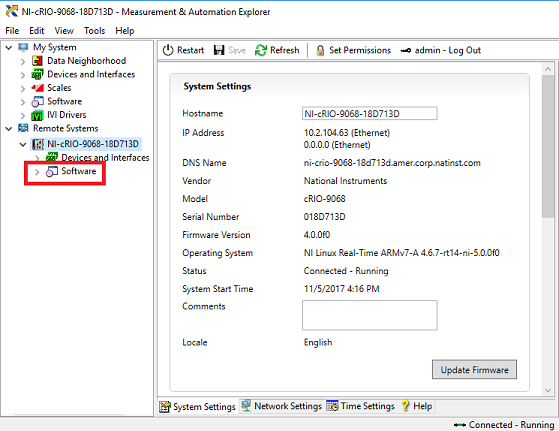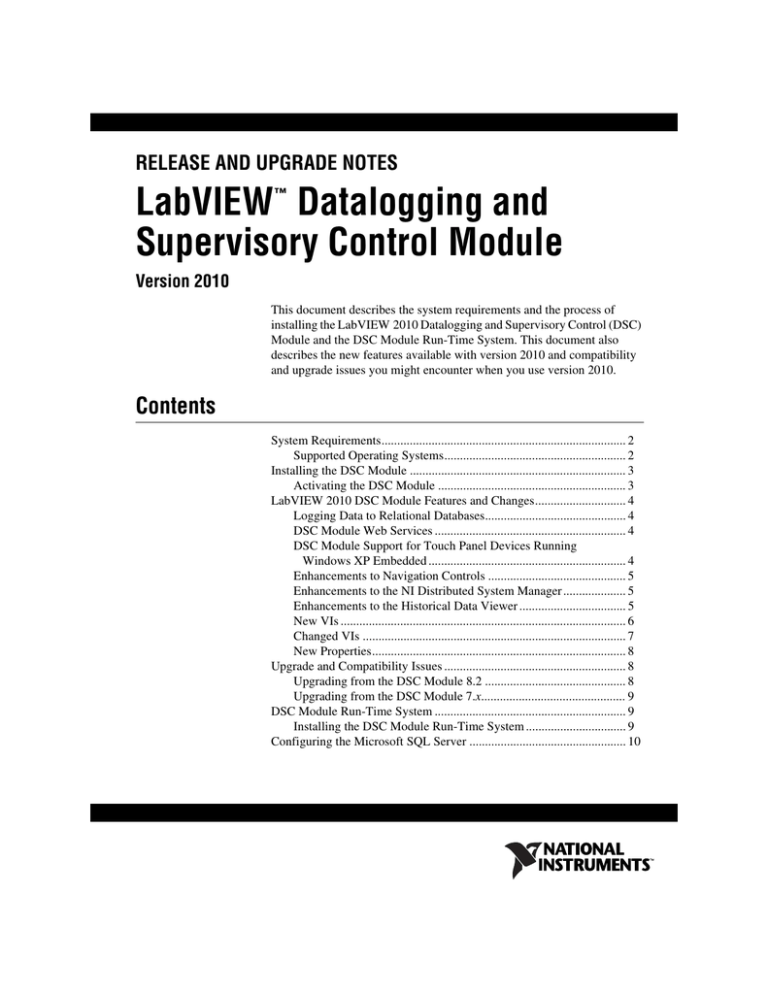
- #HOW TO INSTALL LABVIEW MODULES MAC OS#
- #HOW TO INSTALL LABVIEW MODULES DRIVER#
- #HOW TO INSTALL LABVIEW MODULES SOFTWARE#
- #HOW TO INSTALL LABVIEW MODULES CODE#
#HOW TO INSTALL LABVIEW MODULES SOFTWARE#
You can also use Virtualization Software like VMWare Fusion, Parallels Desktop or VirtualBox.
#HOW TO INSTALL LABVIEW MODULES MAC OS#
To properly access the hardware drivers, NI recommends using Boot Camp to natively run Microsoft Windows on a machine running Mac OS and using the Windows version of LabVIEW. National Instruments does not recommend using the Mac OS version of LabVIEW to communicate to NI hardware. In general, only the Windows edition is recommended to use at USN, Porsgrunn. If you want to use "NI-DAQmx Base" instead, you need to program the DAQ functionality on a lower level (which is not part of this training).
#HOW TO INSTALL LABVIEW MODULES DRIVER#
The NI-DAQmx Driver is supported only on Windows (which we need and use at USN)! A simpler driver called "NI-DAQmx Base" (you can download from Internet, but the software has not been updated lately) offers a subset of NI-DAQmx functionality on Windows, Linux, Mac OS X, but the "DAQ Assistant" we will use in the training is not included.

LabVIEW is supported on Windows and Mac OS/Linux, however many LabVIEW Add-ons are Windows only. Mac OS/Linux? You need a computer with Windows in order to follow this LabVIEW training.
#HOW TO INSTALL LABVIEW MODULES CODE#


Since LabVIEW is a full-blood programming language (in a graphical way), you can use LabVIEW for almost everything, personally I use LabVIEW for Datalogging and Monitoring, DAQ, Control Systems, OPC, Database Systems, SCADA Systems, Hardware in the Loop Simulations and Testing, Modbus, etc. NI has a guided tutorial that walks through the setup and usage of this design pattern.Your browser does not support the video tag. By specifying the path and connector pane of the VIs you want to use, you can reference and call them on-demand rather than on-load. When you dynamically link a VI, the application doesn't know what VI it will call until your code tells it what to call at run time. Since it is statically linked, the application must be able to find the functions and APIs used at load time. When you place a VI on a block diagram, you are statically linking that VI to your application. At build time, this is done by removing regions of the block diagram from compilation with a conditional disable structure.

The next step to make your application support the optional presence of a LabVIEW module is to make your application optionally depend on it.Īt run time, this is done by dynamically calling VIs. You can detect installed NI software at run-time using the System Configuration API Get Installed Software.vi.


 0 kommentar(er)
0 kommentar(er)
